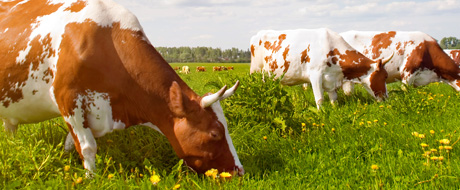We often do not think about the oxidative stress effect on food crops or animals. Nonetheless, it is a real phenomenon that researchers are actively investigating in order to devise methods producers can use to lessen the detrimental effects that oxidative stress can have on crop sustainability and yield, as well as herd health. Recent studies have shown that heat stress leads to oxidative stress. As such some researchers are looking at oxidative stress biomarkers as a convenient way to assess crop and herd health. Beyond the ramifications of assessment, ameliorating conditions of oxidative stress in agriculture may lead to increased levels of food production and profitability.
Changes of serum myeloperoxidase and nitric oxide in the early stage of Edwardsiella ictaluri infection in channel catfish, Ictalurus punctatus (Rafinesque)
Enteric Septicaemia of Catfish (ESC) is a major bacterial disease faced by catfish farmers. Inflammatory immune response is a regular part of disease progression. As part of a study investigating detection and mechanisms of disease progression, these authors measured levels of myeloperoxidase (MPO) using product NWK-MPO03.
H Y Yeh, et al, Journal of Fish Diseases Volume 36, Issue 4, pages 441–446, April 2013 (new window)
Effect of Aspergillus oryzae-challenged germination on soybean isoflavone content and antioxidant activity.
These investigators looked at whether microbial stress on ungerminated or germinated soybeans could induce higher levels of beneficial bioactive substances in the mature soybean. Results showed increased levels of coumestrol, a soybean phytoalexin are produced by A. oryzae challenged germinated soybeans. The authors used NWK-MDA01 and NWK-GSH01 to measure levels of the lipid peroxidation biomarker malondialdehyde and the endogenous antioxidant glutathione in HEPG2 cells treated with coumestrol. Levels of lipid peroxidation were shown to decrease while levels of glutathione were shown not to decrease.
Jeon HY et al, J Agric Food Chem. 2012 Mar 21;60(11):2807-14. (new window)
Effect of drought and combined drought and heat stress on polyamine metabolism in proline-over-producing tobacco plant
Using product NWK-MDA01 the authors measured malondialdehyde (MDA) in tobacco leaves during periods of drought and heat stress. Results showed increasing levels of MDA during periods of stress for both upper and lower leaves but more so in the lower leaves. It is assumed that more constant levels of MDA in the upper leaves is evidence of the plant’s capacity for adaptive response to increased levels of drought and heat stress.
Milena Cvikrová et al, Plant Physiology and Biochemistry, Volume 73, December 2013, Pages 7–15 (new window)






